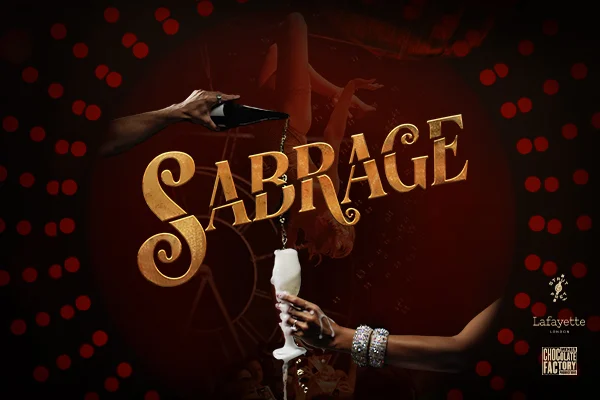I was worrying about the cat. In the 1869 Zola novel on which this adaptation is based, Madame Raquin, Thérèse’s aunt, has a cat. Once Thérèse and her great hulk of a lover Laurent have killed her husband, Camille, their relationship falls apart in recrimination and guilt. At one point Laurent in a rage seizes the cat and throws it out of the window with such force that it breaks its back when it hits the opposite wall. It spends the whole of the night wailing in agony as it drags its miserable carcass round the yard below. It’s a metaphor of almost unparalleled brutality for the fractured burden the two lovers drag around with them. Zola’s novel is merciless in its gaze at what he described as a study of temperaments, not characters. It manages to combine melodrama (hallucinations) with a forensic attention to detail. It remains one of the great works of world crime literature, up there with Dostoevski’s ‘Crime and Punishment.’
Nono Shepphard’s musical adaptation is trailed on the script as ‘a radical adaptation’ but it is nothing of the kind. It is an admirably faithful one, true to the tone, the plot, and above all the pain of the novel.
Nono Shepphard’s musical adaptation is trailed on the script as ‘a radical adaptation’ but it is nothing of the kind. It is an admirably faithful one, true to the tone, the plot, and above all the pain of the novel. The radicalism is in the original. Oppressed by a gloomy haberdashery store in a damp and dingy Parisian arcade – a fine heavy and claustrophobic set from Laura Cordery – Thérèse sleepwalks into marriage to her feeble, mother-dominated cousin. When she is awakened it is by an uncontrollable animalism (that cat again!) that both liberates her frozen heart and condemns it to another bondage. The murder takes place offstage in the interval, leaving Act Two as a study of disintegration and terror. The drowned and bloody body of Camille appears to them in a gesture to Gothic horror which mirrors perfectly their inner state. Will Madame Raquin give them away once she realises what has happened? Despite suffering from Locked-In Syndrome following a stroke, she almost manages to, thwarted only by the invincible stupidity of her friends who come round every Thursday for games of dominoes. Through this fatuous group Zola (and Shepphard) sketch both the social prison which women found themselves in and a kind of comic counterpoint to the torment the lovers suffer in their isolation. Zola’s book is in many ways proto-feminist, and our sympathies for the unsavoury central couple are kept engaged by the perception that Thérèse is a victim of society as much as anything else.
This is a musical in the finest post-Sondheim tradition: musically adventurous, penetrating in its subject matter, shaping the rules of the genre to a sure dramatic purpose. As lyricist, Shepphard knows the value of the telling word – a ‘snuggy’ life, ‘I walk through your breath’ – and the true purpose of rhyme. Here rhyme is reserved for the bourgeois, the ordered - in particular for tyrannical Madame; the language of love, of passion, and of tragedy is altogether looser, shaped by obsessive repetition. The words, which are lean and lithe, sit well on a varied score by Craig Adams, acknowledging its French origins in the numbers for the cosy little domino party but elsewhere ranging far into the jagged recesses of emotion, and never quite going where you expect.
I’m usually suspicious of pieces which have the writer also directing; it’s a recipe for self-indulgence. Howvever, Shepphard brings his own economical book to life with great visual flare and a couple of nice coups de théatre. He is well served by the female members of his cast. Julie Atherton, wide-eyed and numb at the start of the play, erupts with a frightening feral quality when Therese discovers lust. It is a brave performance, which eschews all glamour and most sympathy. But it is Tara Hugo as Madame Raquin who walks off triumphantly with the singing honours. When she has her second stroke, as the numbness creeps up her body, she has a ten-minute – well, aria is the only word really – “A Snuggy Old Age” which is extremely taxing emotionally and vocally, which she brings off superbly. Physically she is not the most expressive of actors – her pain looks more like indigestion – but it’s all there in the voice.
The men fare less well, with a tendency to mugging. In particular Ben Lewis as Laurent lacks the animal quality necessary for Laurent, doesn’t convince as a brute. You feel that Matt WIllman, underused in the small part of the Oarsman, would have made an earthier lover. There’s something lacking in the chemistry which Shepphard tries to cover with his direction, but only partially succeeds.
And the cat? We have the cat here, in a piece of brown fun fur which works very effectively for most of the play. But as Madame is rendered mute, the cat is simply put to one side; it and we are spared its agonised dying. And I can’t help feeling this symbolises an ultimate failure of nerve on the part of the writer/director, which is also shown in ‘11 o’clock number’, ‘If I Had Known’. Lyrically this is a kind of ironic reverse of ‘What I did for love’, those affirmative ‘I-wouldn’t-change-a-thing’ apotheoses which have been sending Broadway audiences out with a warm glow for the last century. But musically it is less ironic, offering an ending which feels more upbeat than the story demands. Shepphard can’t quite go that extra inch that Zola demands in his unrelenting gaze on human stupidity and suffering. However, since reading the original is rather like scraping your nails down a blackboard, maybe in the theatre neither could we.



















